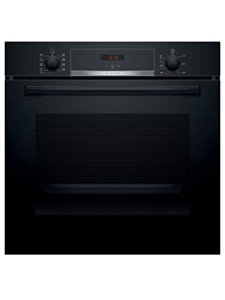Ten Built In Ovens That Really Make Your Life Better
페이지 정보

본문
The Comprehensive Guide to Built-In Ovens
Intro
built in electric ovens-in ovens are a staple in modern-day cooking areas, integrating elegance with performance. They use a smooth visual and effective cooking abilities, making them a preferred option for property owners and culinary enthusiasts alike. This post digs into the benefits of built-in ovens, their different types, key features to think about, installation ideas, and upkeep guidance, along with often asked concerns.
Advantages of Built-In Ovens
built-in electric ovens ovens come with a range of benefits that contribute to their popularity. Here are some essential benefits:

- Space-Saving Design: built in ovens Built-in bulit-in ovens are created to fit effortlessly into cabinets, permitting a more organized and space-efficient kitchen layout.
- Visual Appeal: They supply a sleek and contemporary look that can improve the total design of the kitchen.
- Enhanced Functionality: Built-in ovens typically include advanced functions and technologies that support numerous cooking techniques.
- Enhanced Cooking Experience: Many built-in designs consist of self-cleaning functions, temperature probes, and programmable settings, improving the cooking experience.
- Increased Property Value: A well-designed kitchen with built-in appliances can enhance the value of a home.
Kinds Of Built-In Ovens
Built-in ovens can be found in several types, each designed to meet different cooking preferences and needs. Here are the main types:
| Type of Built-In Oven | Description |
|---|---|
| Single Oven | A single, standalone oven for Built in ovens standard baking and roasting. |
| Double Oven | Combines 2 ovens in one system, enabling multiple dishes to prepare at various temperature levels. |
| Wall Oven | Installed in the wall, freeing up counter space, suitable for small kitchen areas. |
| Stove | Uses fans to distribute hot air for even cooking, boosting the outcomes of baked products. |
| Steam Oven | Utilizes steam for healthier cooking alternatives, protecting nutrients in food. |
Key Features to Consider
When picking a built in oven uk-in oven, numerous functions can affect efficiency and usability. Here are some essential functions to keep in mind:
Cooking Modes
- Bake: Traditional baking with bottom heat.
- Broil: Top heat cooking appropriate for browning and crisping.
- Convection: Circulates hot air for even cooking.
- Steam: Uses steam for healthier cooking choices.
Size and Capacity
- Requirement sizes usually range from 24 to 30 inches wide.
- Consider the internal capacity-- it can range from 3 to 6 cubic feet, enabling various meal sizes.
Controls and Smart Features
- Touchscreen Controls: Easy programming and adjustments.
- Smart Technology: Connectivity features permit remote monitoring and control via smart device applications.
Energy Efficiency
- Try to find designs with ENERGY STAR scores, indicating lower energy consumption.
Safety Features
- Functions like car shut-off and kid locks boost safety throughout operation.
Installation Tips
Installing a built-in oven may require expert assistance, but here are some general pointers to bear in mind:
- Choose the Right Location: Ensure there's enough space in your kitchen cabinetry for installation, remembering ventilation requirements.
- Electrical Requirements: Check that your kitchen's electrical wiring meets the oven's power requirements, specifically for electric models.
- Level the Oven: Ensure the oven is level to promote even cooking.
- Protect the Oven: Attach it firmly to the cabinets to avoid movement throughout usage.
Upkeep Advice
Routine upkeep is essential for the durability and efficiency of a built-in oven. Here's how to keep it in leading shape:
- Regular Cleaning: Wipe down surfaces after each usage and carry out deep cleaning regularly.
- Inspect Seals: Inspect door seals for wear and ensure they maintain an airtight fit to improve energy performance.
- Calibrate Temperature: If food consistently comes out overcooked or undercooked, think about recalibrating the oven's temperature level settings.
- Expert Servicing: Schedule annual check-ups with an experienced technician to preserve optimal efficiency.
FAQs
What is the difference in between a built-in oven and a freestanding oven?
Built-in ovens are developed to be installed within cabinets, using a seamless look. On the other hand, freestanding ovens are standalone units that typically feature their own cooktop.
Are built-in ovens more costly than freestanding designs?
Normally, built-in ovens can be more expensive due to the included installation expenses and advanced functions. However, rates vary extensively based upon brand, size, and functionalities.
Can I install a built-in oven myself?
While it is possible to install a built-in oven yourself, it is advised to employ an expert to guarantee proper setup, particularly if adjustments to cabinetry or electrical work are required.

How often should I clean my built-in oven?
It is recommended to clean your built-in oven frequently after heavy use. For deeper cleanings, use the self-cleaning function if offered or periodically perform manual cleansing to avoid accumulation.
Built in Ovens-in ovens are an important addition to any kitchen, offering both visual appeal and advanced cooking abilities. By understanding their types, functions, setup, and maintenance requirements, property owners can make informed options that improve their cooking experience and enhance the general worth of their homes. As kitchen styles continue to progress, built-in ovens will likely remain a popular option for modern homes.
- 이전글10 Reasons You'll Need To Be Educated About Remote Key Fob Repair 25.05.20
- 다음글Adhd Assessment Strategies From The Top In The Industry 25.05.20
댓글목록
등록된 댓글이 없습니다.